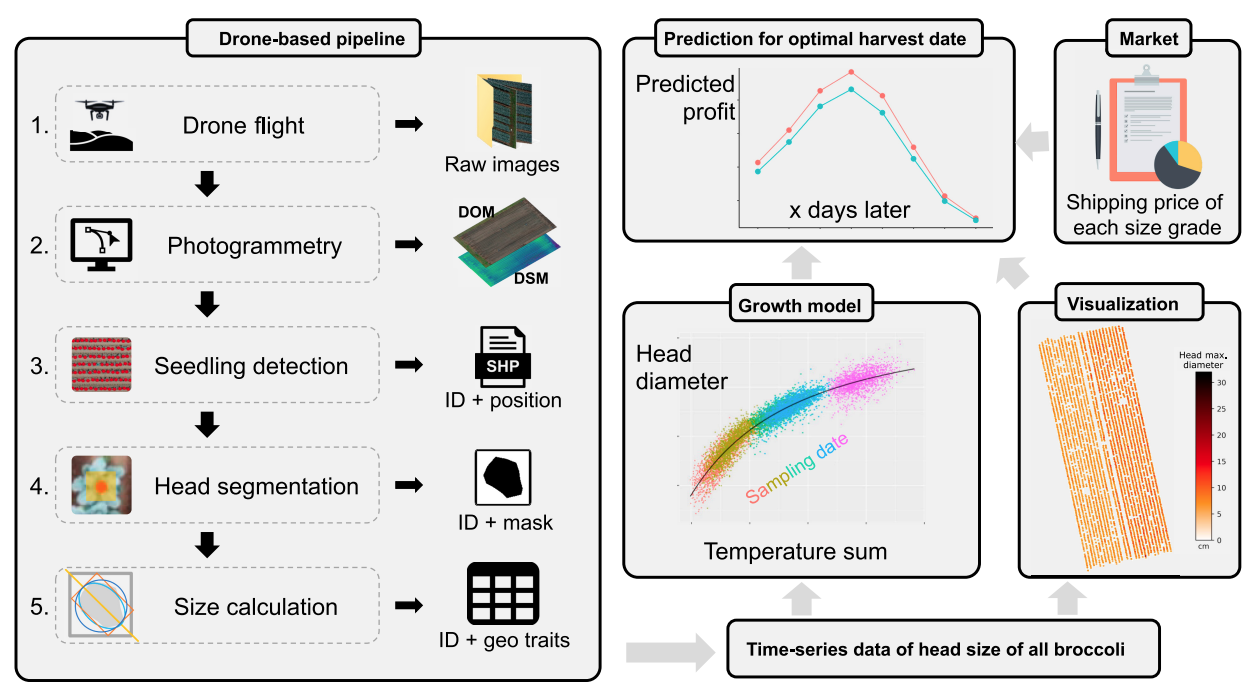
Drone-based pipeline. A visual overview of the system to capture and analyze image data about crops, which then informs a model to help farmers know the best time to harvest their fields. Image Credit: 2023 Guo et al. CC-BY
The idea is relatively simple, but the design, implementation and execution is extraordinarily complex. If farmers know the ideal time to harvest crop fields, they can reduce waste, which is good for them, for consumers and the environment. But optimum harvest times are not an easy thing to predict and ideally require detailed knowledge of each plant; such data would be cost and time prohibitive if people were employed to collect it. This is where the drones come in.
Wei Guo, Associate Professor, Laboratory of Field Phenomics, University of Tokyo
Guo has a background in both computer science and agricultural science, meaning that he is the ideal candidate to investigate how cutting-edge technology and software could benefit agriculture.
He and his team have proven that affordable drones equipped with specialized software can capture and analyze images of young plants, such as broccoli in this study, accurately predicting their growth traits. These drones conduct multiple imaging sessions autonomously, eliminating the need for human intervention, thus significantly minimizing labor costs.
Guo added, “It might surprise some to know that by harvesting a field as little as a day before or after the optimal time could reduce the potential income of that field for the farmer by 3.7% to as much as 20.4%. But with our system, drones identify and catalog every plant in the field, and their imaging data feeds a model that uses deep learning to produce easy-to-understand visual data for farmers. Given the current relative low costs of drones and computers, a commercial version of this system should be within reach to many farmers.”
The main challenge was centered around image analysis and deep learning. While collecting image data was straightforward, the natural movement of plants in the wind and the changing light conditions due to time and seasons introduced significant variability. Machines struggled to compensate for these variations.
Consequently, the team invested a substantial amount of time in labeling different aspects of the images captured by drones. This painstaking effort was essential to train the system, enabling it to accurately identify the visual cues.
Managing the extensive data throughput also posed a significant challenge; the image data often reached the scale of trillions of pixels, surpassing the capacity of even the most advanced high-end smartphone camera by tens of thousands of times.
“I am inspired to find more ways that plant phenotyping (measuring of plant growth traits) can go from the lab to the field in order to help solve the major problems we face,” Guo concluded.
Journal Reference:
Wang, H., et al. (2023) Drone-Based Harvest Data Prediction Can Reduce On-Farm Food Loss and Improve Farmer Income. Plant Phenomics. doi:10.34133/plantphenomics.0086